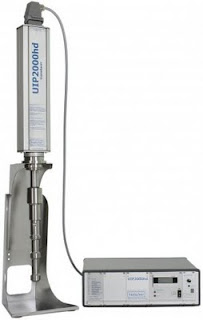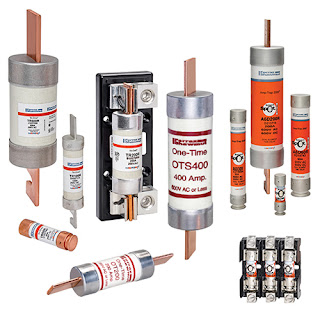Ultrasonic Reactor Speeds up Chemical Catalysis
An in-line ultrasonic reactor made by Hielscher can be used to speed up chemical catalysis in a number of chemical manufacturing processes. In these processes, catalysis increases the reaction rate. The use of ultrasound is one way of speeding up the chemical catalysis. During the sonication of liquids, the acoustic wavelength ranges between approximately 110mm and 0.15mm for frequencies of 18kHz and 10Mhz.
This is said to be significantly higher than those of molecular dimensions. The effects of sonication are mostly generated by the ultrasonic cavitation in liquids. Therefore, for the ultrasound catalysis, at least one reagent in a liquid phase is necessary. Cavitation erosion on particle surfaces generates unpassivated, highly reactive surfaces. Short periods of high temperatures and pressures contribute to a molecular decomposition and increase the reactivity of many chemical substances.
Ultrasonic irradiation can also be used to prepare the catalysts, for example to produce aggregates of fine-size particles. In heterogeneous catalysis, the catalyst and reagents are in different phases. Therefore, the heterogeneous catalysis is limited to the phase boundary because this is the only place where the reagent and the catalyst are present. The exposure of the reactants and of the catalyst is a key factor for many multi-phase chemical reactions. For this reason, the specific surface area of the phase boundary becomes influential for the chemical rate of reaction.
Ultrasound is used in many processes for the effective dispersion of solids and the fine emulsification of liquids. Using the Hielscher ultrasonic reactor, fine particles or droplets can be achieved during the initial mixing of the reactants and the catalyst in a very short time and at high flow rates. This method can also be used for high-viscosity materials. Ultrasound contributes to the heterogeneous and homogeneous catalysis in many ways. By customising the ultrasonic amplitude and the fluid pressure, the individual effects of the catalytic process can be actively increased or reduced.
This is said to be significantly higher than those of molecular dimensions. The effects of sonication are mostly generated by the ultrasonic cavitation in liquids. Therefore, for the ultrasound catalysis, at least one reagent in a liquid phase is necessary. Cavitation erosion on particle surfaces generates unpassivated, highly reactive surfaces. Short periods of high temperatures and pressures contribute to a molecular decomposition and increase the reactivity of many chemical substances.
Ultrasonic irradiation can also be used to prepare the catalysts, for example to produce aggregates of fine-size particles. In heterogeneous catalysis, the catalyst and reagents are in different phases. Therefore, the heterogeneous catalysis is limited to the phase boundary because this is the only place where the reagent and the catalyst are present. The exposure of the reactants and of the catalyst is a key factor for many multi-phase chemical reactions. For this reason, the specific surface area of the phase boundary becomes influential for the chemical rate of reaction.
Ultrasound is used in many processes for the effective dispersion of solids and the fine emulsification of liquids. Using the Hielscher ultrasonic reactor, fine particles or droplets can be achieved during the initial mixing of the reactants and the catalyst in a very short time and at high flow rates. This method can also be used for high-viscosity materials. Ultrasound contributes to the heterogeneous and homogeneous catalysis in many ways. By customising the ultrasonic amplitude and the fluid pressure, the individual effects of the catalytic process can be actively increased or reduced.



Comments